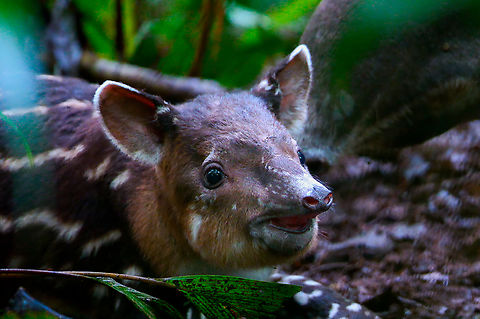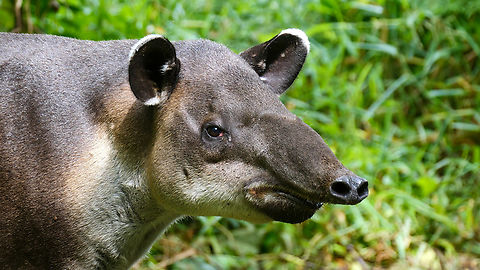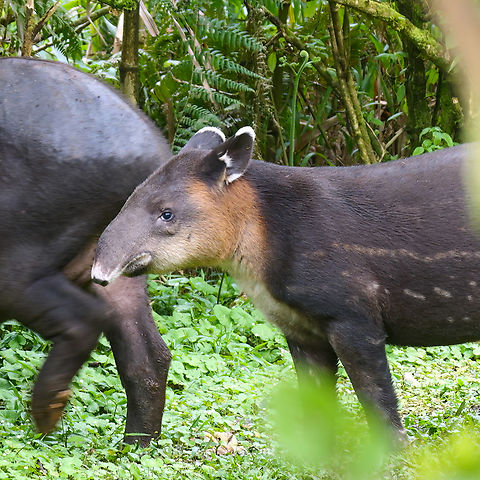
Appearance
Baird’s Tapir has a distinctive cream-colored marking on its face and throat and a dark spot on each cheek, behind and below the eye. The rest of its hair is dark brown or grayish-brown. The animal is the largest of the three American species and the largest land mammal found in the wild from Mexico to South America. Baird’s Tapirs average up to 2 metres in length and 1.2 metres in height, and adults weigh 150–400 kilograms. Like the other species of tapir, they have small stubby tails and long, flexible proboscises. They have four toes on each front foot and three toes on each back foot.
Naming
Baird’s Tapir is named for the American naturalist Spencer Fullerton Baird who traveled to Mexico in 1843 and observed the animals. However, the species was first documented by another American naturalist, W. T. White.Tapir is the largest land mammal in Central America.
Like the other Latin American tapirs, Baird’s Tapir is commonly called "danta" by people in all areas. In the regions around Oaxaca and Veracruz, it is referred to as the "anteburro". Panamanians, and Colombians call it "macho de monte", and in Belize, where Baird’s Tapir is the national animal, it is known as the mountain cow.
In Mexico, it is called "tzemen" in Tzeltal; in Lacandon, it is called "cash-i-tzimin", meaning “jungle horse” and in Tojolab'al it is called "niguanchan", meaning “big animal.” In Panama, the Kunas people call Baird’s Tapir "moli" in their colloquial language, "oloalikinyalilele", "oloswikinyaliler," or "oloalikinyappi" in their political language, and "ekwirmakka" or "ekwilamakkatola" in their spiritual language.

Behavior
Baird's Tapir may be active at all hours, but is primarily nocturnal. It forages for leaves and fallen fruit, using well-worn tapir paths which zig-zag through the thick undergrowth of the forest. The animal usually stays close to water and enjoys swimming and wading. On particularly hot days, individuals will rest in a watering hole for hours with only their heads above the water.It generally leads a solitary life, though feeding groups are not uncommon, and individuals, especially those of different ages are often observed together. The animals communicate with one another through shrill whistles and squeaks.
Adults can be potentially dangerous to humans if approached. When people come too close to them, tapirs may follow or even chase them for while. People have been charged and, on rare occasions, gored by tapirs.
References:
Some text fragments are auto parsed from Wikipedia.